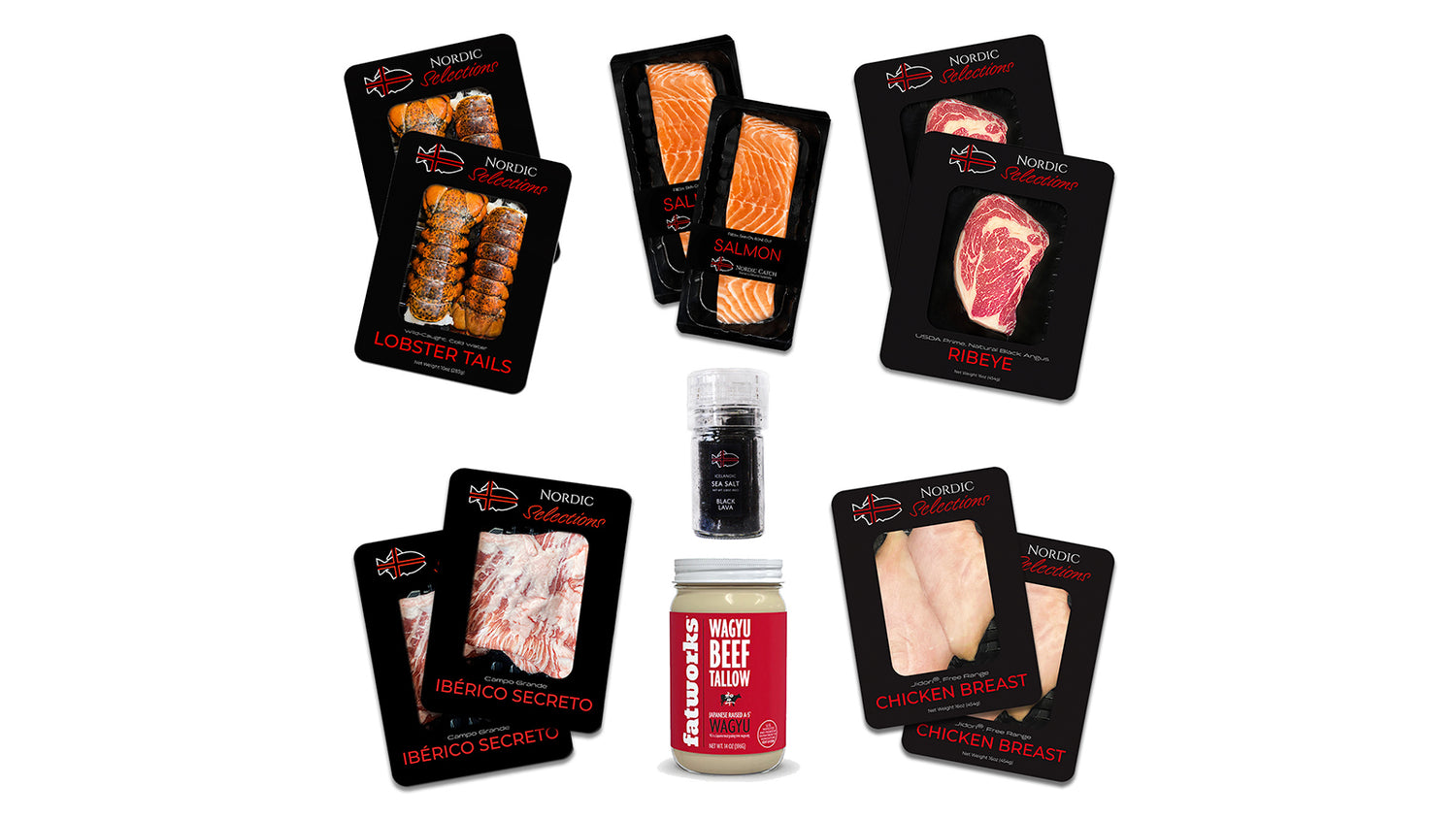
How To Tell If Your Seafood is Fresh
Whether shopping for fresh seafood at your local grocery store or using a fresh seafood delivery service, you deserve the best. Fresh seafood is, in every single way, better than frozen seafood — it tastes better, the texture is more consistent, and it has more beneficial nutrients.
Let’s review how to tell if your seafood is fresh so you can rest assured that you’re always getting the best quality fish.
How to Tell if Your Seafood Is Fresh
When buying fresh seafood, pay attention to the following three things to ensure you’re getting fresh, never-frozen seafood that’s tasty and safe to consume. Suppose the seafood you’re considering doesn’t pass these quick checks. In that case, choosing another piece or shopping elsewhere is probably best.
1. Check the Appearance
The next time you go shopping for fresh, sushi-grade fish, look for the following:
- Bright, clear eyes: Fresh fish will have bright, clear eyes that appear full and bulging. Cloudy, sunken eyes indicate the fish has been sitting out too long. If the eyes look dull, the fish is likely past its prime.
- Shiny and metallic skin: Fresh fish should have shiny, metallic skin. This shine comes from the guanine crystals that reflect light, giving the fish a natural glow. As fish ages, the skin becomes dull, and the scales may begin to flake off. A dull or patchy appearance indicates the fish is no longer fresh.
- Firm and resilient flesh: When you press on the flesh of fresh seafood, it should be firm and spring back quickly. Soft or mushy flesh indicates the seafood is past its peak. Fresh fish filets should also look glossy and slightly translucent. If the flesh has a chalky or discolored appearance, it’s best to avoid it. Make sure to check the label to see if the fish was treated with carbon monoxide, as this process alters the color to make it appear fresher for longer, theoretically extending shelf life.
2. Smell the Seafood
Fresh fish should have a light, salty smell, similar to the fresh air by the sea. This is one of the easiest and most reliable ways to judge seafood quality. A strong, fishy smell indicates the seafood has started to spoil. If you detect a pungent odor, it’s best to steer clear. This smell indicates the breakdown of fish proteins, which can pose a health risk if consumed.
3. Feel the Fish
Fresh seafood should feel moist and slightly slick. This natural slime layer helps protect the fish from drying out and acts as a barrier to bacteria. A fish that feels dry or sticky has likely been out of the water too long. On the other hand, if the seafood feels overly slimy or sticky, it’s a sign that it’s beginning to decay.
Freshness Indicators for Different Types of Seafood
Different types of seafood have specific freshness indicators.
Fish Filets
When buying fresh fish filets such as salmon, tuna, or cod, pay attention to these areas:
- Gills: The gills of fresh fish are one of the first areas to show signs of aging. They should be bright red and moist, not brownish or dry.
- Scales: Fresh fish will have shiny, intact scales tightly attached to the body, and the skin should have a metallic sheen. If the scales are falling off or the fish looks dull, it’s a sign that the fish is no longer fresh.
Shellfish
Shellfish like clams, mussels, and oysters have specific signs of freshness:
- Closed shells: Like Japanese scallops, fresh shellfish will have closed shells. If a shell is slightly open, tap it. If the shell closes, the shellfish is still alive and fresh. If the shell doesn’t close, avoid it — it’s a sign the shellfish is no longer alive.
- Movement in live shellfish: Movement is a crucial sign of freshness for live shellfish like lobsters and crabs. Fresh lobsters and crabs should show some movement, even if minimal. If the shellfish is entirely still, it may be dead and no longer safe to eat.
The Benefits of Buying Sustainable Seafood
When shopping for seafood, it’s not just freshness—sustainability is key to protecting marine ecosystems. Sustainable seafood ensures that fish populations remain healthy and that fishing methods minimize environmental impact.
Look for certifications like MSC (Marine Stewardship Council) or ASC (Aquaculture Stewardship Council) labels indicating responsible sourcing practices. Buying sustainable seafood helps maintain biodiversity, supports local fishing communities, and guarantees future generations can enjoy fresh, high-quality seafood, too. Prioritizing freshness and sustainability will ensure you make the best choice for your health and the planet.
Frequently Asked Questions
How long is seafood considered fresh?
Raw seafood lasts 1-2 days in the fridge, while cooked seafood stays fresh for 3-4 days; frozen seafood remains safe indefinitely but loses quality over time. Seafood from Nordic Catch arrives in packaging with an airtight seal that extends the freshness to 6-7 days.
What is the white stuff on seafood?
The white substance on cooked seafood is albumin, a protein brought out by high heat.
What does spoiled seafood smell like?
Spoiled seafood smells intensely fishy, sour, or like rotting meat.
Can you eat cooked shrimp after five days?
Cooked shrimp is safe to eat if stored in the refrigerator for 3-4 days. It is not recommended to eat it after five days.

